Higher classification Asterales | Scientific name Asteraceae | |
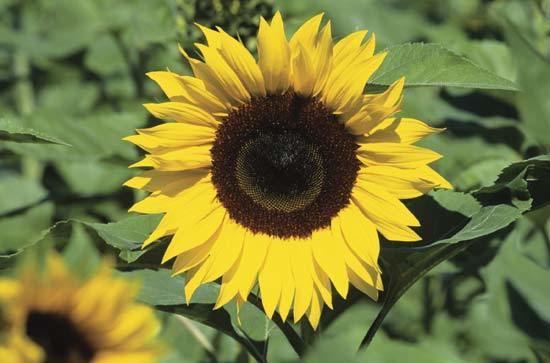 | ||
Lower classifications | ||
Plant families asteraceae
Asteraceae or Compositae (commonly referred to as the aster, daisy, composite, or sunflower family) is a very large and widespread family of flowering plants (Angiospermae).
Contents
- Plant families asteraceae
- Taxonomy and diversity of asteraceae
- Etymology and pronunciation
- Distribution
- Taxonomy
- Characteristics
- Roots and stems
- Leaves
- Floral heads
- Floral structures
- Fruits and seeds
- Metabolites
- Evolution
- Ecology
- Uses
- References
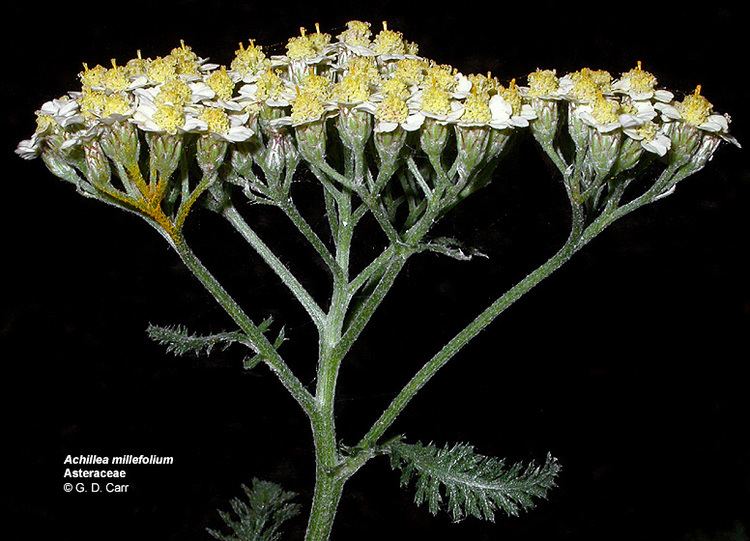
The family currently has 32,913 accepted species names, in 1,911 genera (list) and 13 subfamilies. In terms of numbers of species, the Asteraceae are rivaled only by the Orchidaceae. (Which of the two families is actually larger is unclear, owing to uncertainty about exactly how many species exist in each family.) Many members have composite flowers in the form of flower heads (capitula or pseudanthia) surrounded by involucral bracts. When viewed from a distance, each capitulum may have the appearance of being a single flower. The name "Asteraceae" comes from the type genus Aster, from the Greek ἀστήρ, meaning star, and refers to the star-like form of the inflorescence. "Compositae" is an older but still valid name which refers to the fact that the family is one of the few angiosperm ones to have composite flowers.
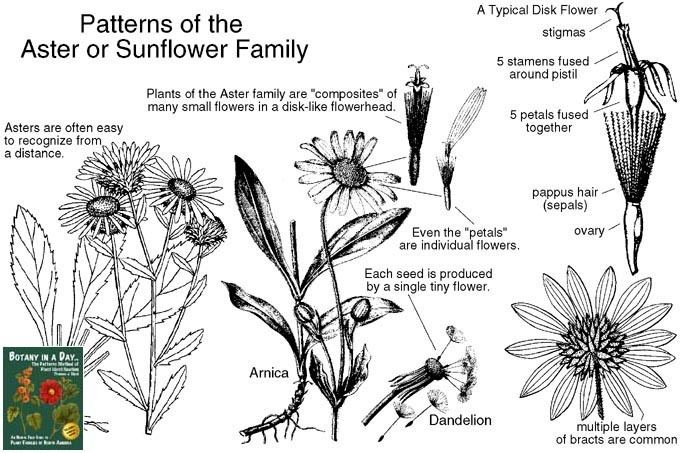
Most members of Asteraceae are herbaceous, but a significant number are also shrubs, vines, or trees. The family has a worldwide distribution, from the polar regions to the tropics, colonizing a wide variety of habitats. It is most common in the arid and semiarid regions of subtropical and lower temperate latitudes. The Asteraceae may represent as much as 10% of autochthonous flora in many regions of the world.

Asteraceae is an economically important family, providing products such as cooking oils, lettuce, sunflower seeds, artichokes, sweetening agents, coffee substitutes and herbal teas. Several genera are of horticultural importance, including pot marigold, Calendula officinalis, Echinacea (cone flowers), various daisies, fleabane, chrysanthemums, dahlias, zinnias, and heleniums. Asteraceae are important in herbal medicine, including Grindelia, yarrow, and many others. A number of species are considered invasive, including, most notably in North America, dandelion, which was originally introduced by European settlers who used the young leaves as a salad green.
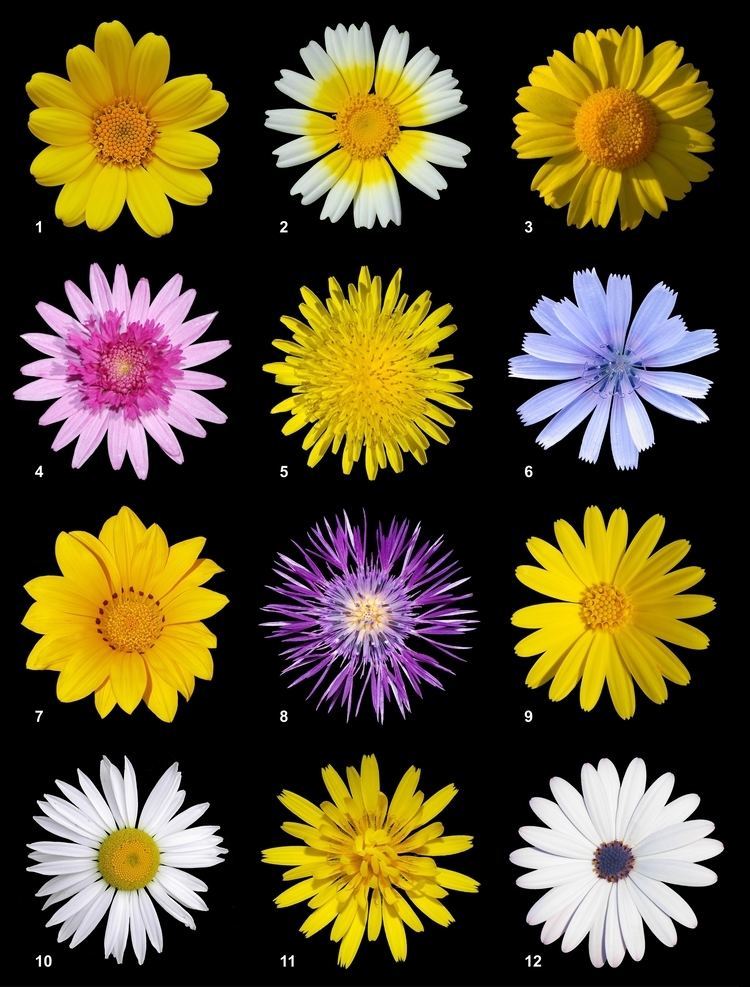
Taxonomy and diversity of asteraceae
Etymology and pronunciation
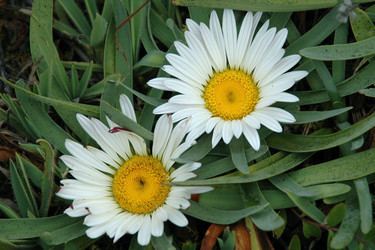
The name "Asteraceae" (English /ˌæSTərˈeɪsi, -siˌaɪ, -siˌeɪ, -siˌi/) comes to international scientific vocabulary from New Latin, from Aster, the Type genus, + -aceae, a standardized suffix for plant family names in modern taxonomy. The genus name comes from the Classical Latin word aster, "star", which came from Ancient Greek ἀστήρ (astḗr), "star". "Compositae", an older but still valid name, means "composite" and refers to the characteristic inflorescence, a special type of pseudanthium found in only a few other angiosperm families. The study of this family is known as synantherology.
The vernacular name "daisy", widely applied to members of this family, is derived from its Old English name: Dægesege, from dæges eage, meaning "day's eye". This is because the petals (of Bellis perennis) open at dawn and close at dusk.
Distribution
Composite flowers have a cosmopolitan distribution, and are found everywhere except Antarctica and the extreme Arctic. They are especially numerous in tropical and subtropical regions (notably Central America, eastern Brazil, the Mediterranean, the Levant part of the Middle East, southern Africa, central Asia, and southwestern China).
Taxonomy
Compositae were first described in 1792 by the German botanist Paul Dietrich Giseke. Traditionally, two subfamilies were recognised: Asteroideae (or Tubuliflorae) and Cichorioideae (or Liguliflorae). The latter has been shown to be extensively paraphyletic, and has now been divided into 12 subfamilies, but the former still stands. The phylogenetic tree presented below is based on Panero & Funk (2002) updated in 2014, and now also includes the monotypic Famatinanthoideae. The diamond denotes a very poorly supported node (<50% bootstrap support), the dot a poorly supported node (<80%).
It is noteworthy that the four subfamilies Asteroideae, Cichorioideae, Carduoideae and Mutisioideae contain 99% of the species Diversity of the whole family (approximately 70%, 14%, 11% and 3% respectively).
Because of the morphological complexity exhibited by this family, agreeing on generic circumscriptions has often been difficult for taxonomists. As a result, several of these genera have required multiple revisions.
Characteristics
Members of the Asteraceae are mostly herbaceous plants, but some shrubs, trees and climbers do exist. They are generally easy to distinguish from other plants, mainly because of their characteristic inflorescence and other shared characteristics. However, determining genera and species of some groups such as Hieracium is notoriously difficult (see "damned yellow composite" for example).
Roots and stems
Members of the Asteraceae generally produce taproots, but sometimes they possess fibrous root systems. Stems are generally erect but can be prostrate to ascending. Some species have underground stems in the form of caudices or rhizomes. These can be fleshy or woody depending on the species.
Leaves
The leaves and the stems very often contain secretory canals with resin or latex (particularly common among the Cichorioideae). The leaves can be alternate, opposite, or whorled. They may be simple, but are often deeply lobed or otherwise incised, often conduplicate or revolute. The margins can be entire or lobed or toothed.
Floral heads
In plants of the family Asteraceae, what appears to be a single flower is actually a cluster of much smaller flowers. The overall appearance of the cluster, as a single flower, functions in attracting pollinators in the same way as the structure of an individual flower in some other plant families. The older family name, Compositae, comes from the fact that what appears to be a single flower, is actually a composite of smaller flowers. The "petals" or "sunrays" in a sunflower head are actually individual strap-shaped flowers called "ray flowers", and the "sun disk" is made of smaller circular shaped individual flowers called "disc flowers". The word aster means "star" in Greek, referring to the appearance of some family members, as a "star" surrounded by "rays". The cluster of flowers that may appear to be a single flower, is called a head. The entire head may move tracking the sun, like a "smart" solar panel, which maximizes reflectivity of the whole unit and can thereby attract more pollinators.
A ray flower is a 3-tipped (3-lobed), strap-shaped, individual flower in the head of some members of the family Asteraceae. Sometimes a ray flower has 2 tips (or 2-lobes). The corolla of the ray flower may have 2 tiny teeth opposite the 3 lobed strap, or tongue, indicating evolution by fusion from an originally 5 part corolla. Sometimes, the 3:2 arrangement is reversed, with 2 tips on the tongue, and 0 or 3 tiny teeth opposite the tongue. A ligulate flower is a 5 tipped, strap-shaped, individual flower in the heads of other members. A ligule is the strap-shaped tongue of the corolla of either a ray flower or of a ligulate flower. A disk flower (or disc flower) is a radially symmetric (i.e., with identical shaped petals arranged in circle around the center) individual flower in the head, which is ringed by ray flowers when both are present. Sometimes ray flowers may be slightly off from radial symmetry, or weakly bilaterally symmetric, as in the case of desert pincushions Chaenactis fremontii.
At the base of the head, and surrounding the flowers before opening, is a bundle of sepal-like bracts or scales called phyllaries, which together form the involucre that protects the individual flowers in the head before opening. The individual heads have the smaller individual flowers arranged on a round or dome-like structure called the receptacle. The flowers mature first at the outside, moving toward the center, with the youngest in the middle.
The individual flowers in a head have 5 fused petals (rarely 4), but instead of sepals, have threadlike, hairy, or bristly structures called pappus, which surround the fruit and can stick to animal fur or be lifted by wind, aiding in seed dispersal. The whitish fluffy head of a dandelion commonly blown on by children, is made of the pappus, with tiny seeds attached at the ends, whereby the pappus provides a parachute like structure to help the seed be carried away in the wind.
A radiate head has disc flowers surrounded by ray flowers. A ligulate head has all ligulate flowers. When a sunflower family flower head has only disk flowers that are sterile, male, or have both male and female parts, it is a discoid head. Disciform heads have only disc flowers, but may have two kinds (male flowers and female flowers) in one head, or may have different heads of two kinds (all male, or all female). Pistillate heads have all female flowers. Staminate heads have all male flowers.
Sometimes, but rarely, the head contains only a single flower, or has a single flowered pistillate (female) head, and a multi-flowered male staminate (male) head.
Floral structures
The distinguishing characteristic of Asteraceae is their inflorescence, a type of specialised, composite flower head or pseudanthium, technically called a calathium or capitulum, that may look superficially like a single flower. The capitulum is a contracted raceme composed of numerous individual sessile flowers, called florets, all sharing the same receptacle.
A set of bracts forms an involucre surrounding the base of the capitulum. These are called "phyllaries", or "involucral bracts". They may simulate the sepals of the pseudanthium. These are mostly herbaceous but can also be brightly coloured (e.g. Helichrysum) or have a scarious (dry and membranous) texture. The phyllaries can be free or fused, and arranged in one to many rows, overlapping like the tiles of a roof (imbricate) or not (this variation is important in identification of tribes and genera).
Each floret may be subtended by a bract, called a "palea" or "receptacular bract". These bracts are often called "chaff". The presence or absence of these bracts, their distribution on the receptacle, and their size and shape are all important diagnostic characteristics for genera and tribes.
The florets have five petals fused at the base to form a corolla tube and they may be either actinomorphic or zygomorphic. Disc florets are usually actinomorphic, with five petal lips on the rim of the corolla tube. The petal lips may be either very short, or long, in which case they form deeply lobed petals. The latter is the only kind of floret in the Carduoideae, while the first kind is more widespread. Ray florets are always highly zygomorphic and are characterised by the presence of a ligule, a strap-shaped structure on the edge of the corolla tube consisting of fused petals. In the Asteroideae and other minor subfamilies these are usually borne only on florets at the circumference of the capitulum and have a 3+2 scheme – above the fused corolla tube, three very long fused petals form the ligule, with the other two petals being inconspicuously small. The Cichorioidea has only ray florets, with a 5+0 scheme – all five petals form the ligule. A 4+1 scheme is found in the Barnadesioideae. The tip of the ligule is often divided into teeth, each one representing a petal. Some marginal florets may have no petals at all (filiform floret).
The calyx of the florets may be absent, but when present is always modified into a pappus of two or more teeth, scales or bristles and this is often involved in the dispersion of the seeds. As with the bracts, the nature of the pappus is an important diagnostic feature.
There are usually five stamens. The filaments are fused to the corolla, while the anthers are generally connate (syngenesious anthers), thus forming a sort of tube around the style (theca). They commonly have basal and/or apical appendages. Pollen is released inside the tube and is collected around the growing style, and then, as the style elongates, is pushed out of the tube (Nüdelspritze).
The pistil consists of two connate carpels. The style has two lobes. Stigmatic tissue may be located in the interior surface or form two lateral lines. The ovary is inferior and has only one ovule, with basal placentation.
Fruits and seeds
In members of the Asteraceae the fruit is achene-like, and is called a cypsela (plural cypselae). Although there are two fused carpels, there is only one locule, and only one seed per fruit is formed. It may sometimes be winged or spiny because the pappus, which is derived from calyx tissue often remains on the fruit (for example in dandelion). In some species, however, the pappus falls off (for example in Helianthus). Cypsela morphology is often used to help determine plant relationships at the genus and species level. The mature seeds usually have little endosperm or none.
Metabolites
In Asteraceae the energy store is generally in the form of inulin rather than starch. They produce iso/chlorogenic acid, sesquiterpene lactones, pentacyclic triterpene alcohols, various alkaloids, acetylenes (cyclic, aromatic, with vinyl end groups), tannins. They have terpenoid essential oils which never contain iridoids.
Evolution
The oldest known fossils of members of Asteraceae are pollen grains from the Late Cretaceous of Antarctica, dated to ∼76–66 Mya (Campanian to Maastrichtian) and assigned to the extant genus Dasyphyllum. Barreda et al. (2015) estimated that the crown group of Asteraceae evolved at least 85.9 Mya (Late Cretaceous, Santonian) with a stem node age of 88-89 Mya (Late Cretaceous, Coniacian).
It is still unknown whether the precise cause of their great success was the development of the highly specialised capitulum, their ability to store energy as fructans (mainly inulin), which is an advantage in relatively dry zones, or some combination of these and possibly other factors.
Ecology
Asteraceans are especially common in open and dry environments.
Many members of Asteraceae are pollinated by insects, which explains their value in attracting beneficial insects, but anemophyly is also present (e.g. Ambrosia, Artemisia). There are many apomictic species in the family.
Seeds are ordinarily dispersed intact with the fruiting body, the cypsela. Wind dispersal is common (anemochory) assisted by a hairy pappus. Another common variation is epizoochory, in which the dispersal unit, a single cypsela (e.g. Bidens) or entire capitulum (e.g. Arctium) provided with hooks, spines or some equivalent structure, sticks to the fur or plumage of an animal (or even to clothes, as in the photo) just to fall off later far from its mother plant.
Uses
Commercially important plants in Asteraceae include the food crops Lactuca sativa (lettuce), Cichorium (chicory), Cynara scolymus (globe artichoke), Helianthus annuus (sunflower), Smallanthus sonchifolius (yacón), Carthamus tinctorius (safflower) and Helianthus tuberosus (Jerusalem artichoke). Compositae is used as herbs and in herbal teas and other beverages. Chamomile, for example, comes from two different species: the annual Matricaria chamomilla (German chamomile) and the perennial Chamaemelum nobile (Roman chamomile). Calendula (known as pot marigold) is grown commercially for herbal teas and potpourri. Echinacea is used as a medicinal tea. The wormwood genus Artemisia includes absinthe (A. absinthium) and tarragon (A. dracunculus). Winter tarragon (Tagetes lucida), is commonly grown and used as a tarragon substitute in climates where tarragon will not survive.
Plants in Asteraceae are medically important in areas that don't have access to Western medicine. They are also commonly featured in medical and phytochemical journals because the sesquiterpene lactone compounds contained within them are an important cause of allergic contact dermatitis. Allergy to these compounds is the leading cause of allergic contact dermatitis in florists in the US. Pollen from ragweed Ambrosia is among the main causes of so-called hay fever in the United States.
Many members of the family are grown as ornamental plants for their flowers, and some are important ornamental crops for the cut flower industry. Some examples are Chrysanthemum, Gerbera, Calendula, Dendranthema, Argyranthemum, Dahlia, Tagetes, Zinnia, and many others.
Compositae are also used for some industrial purposes. Marigold (Tagetes patula) is common in commercial poultry feeds and its oil is extracted for uses in cola and the cigarette industry.
Many members of Asteraceae are copious nectar producers and are useful for evaluating pollinator populations during their bloom. Centaurea (knapweed), Helianthus annuus (domestic sunflower), and some species of Solidago (goldenrod) are major "honey plants" for beekeepers. Solidago produces relatively high protein pollen, which helps honey bees over winter.
Some members of Asteraceae are economically important as weeds. Notable in the United States are the ragwort, Senecio jacobaea, groundsel Senecio vulgaris, and Taraxacum (dandelion). The genera Chrysanthemum, Pulicaria, Tagetes, and Tanacetum contain species with useful insecticidal properties. Parthenium argentatum (guayule) is a source of hypoallergenic latex.
